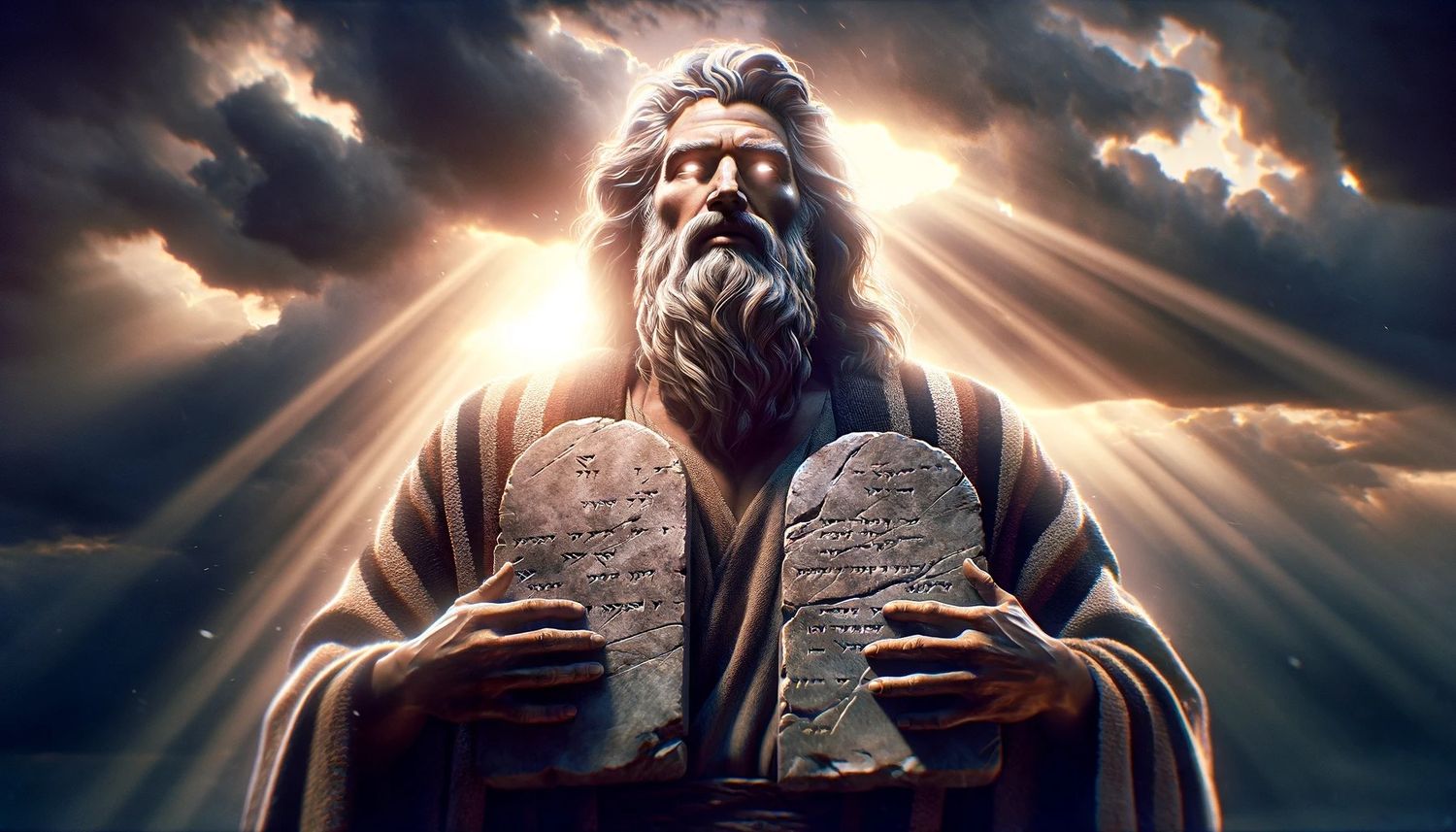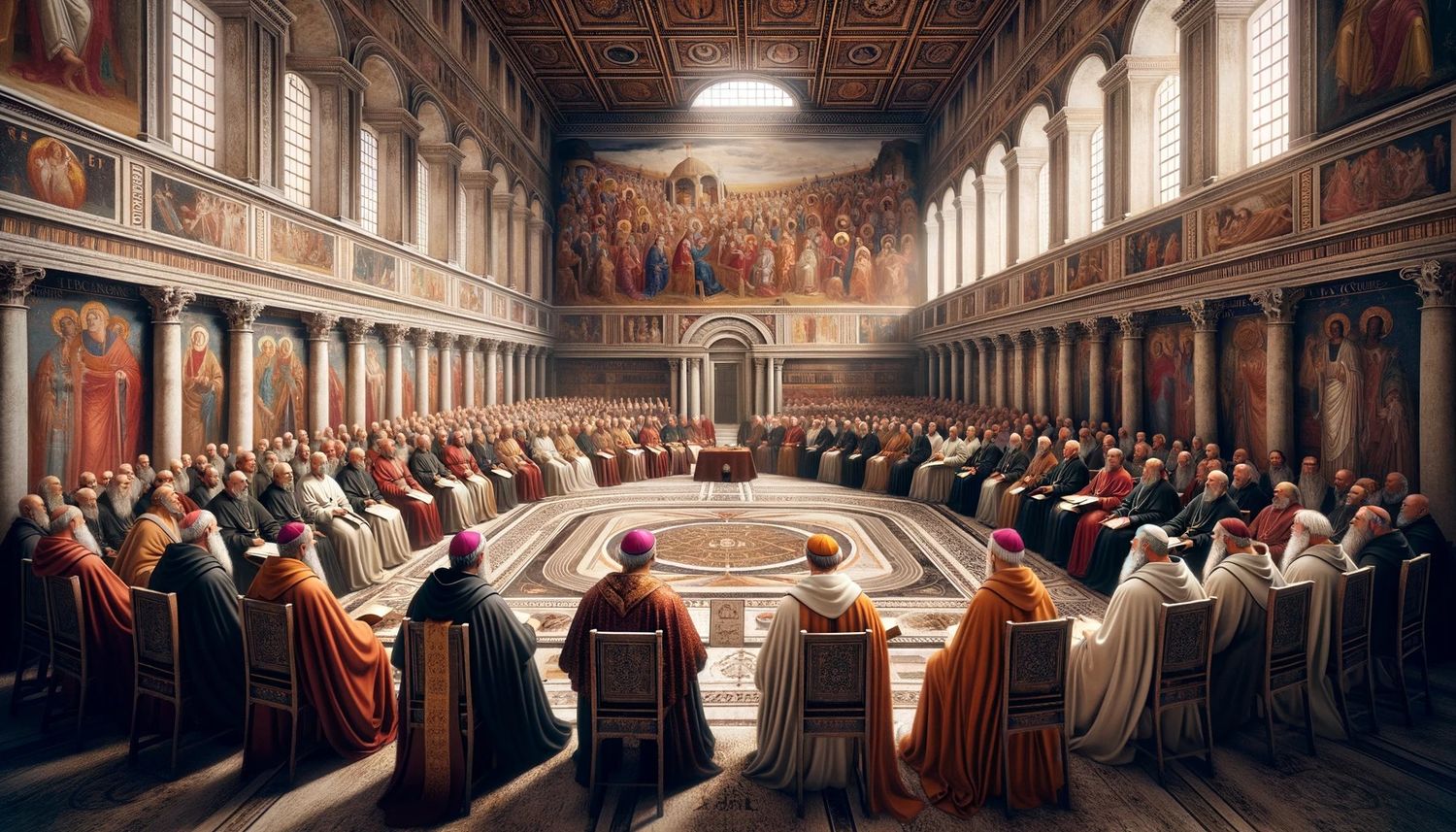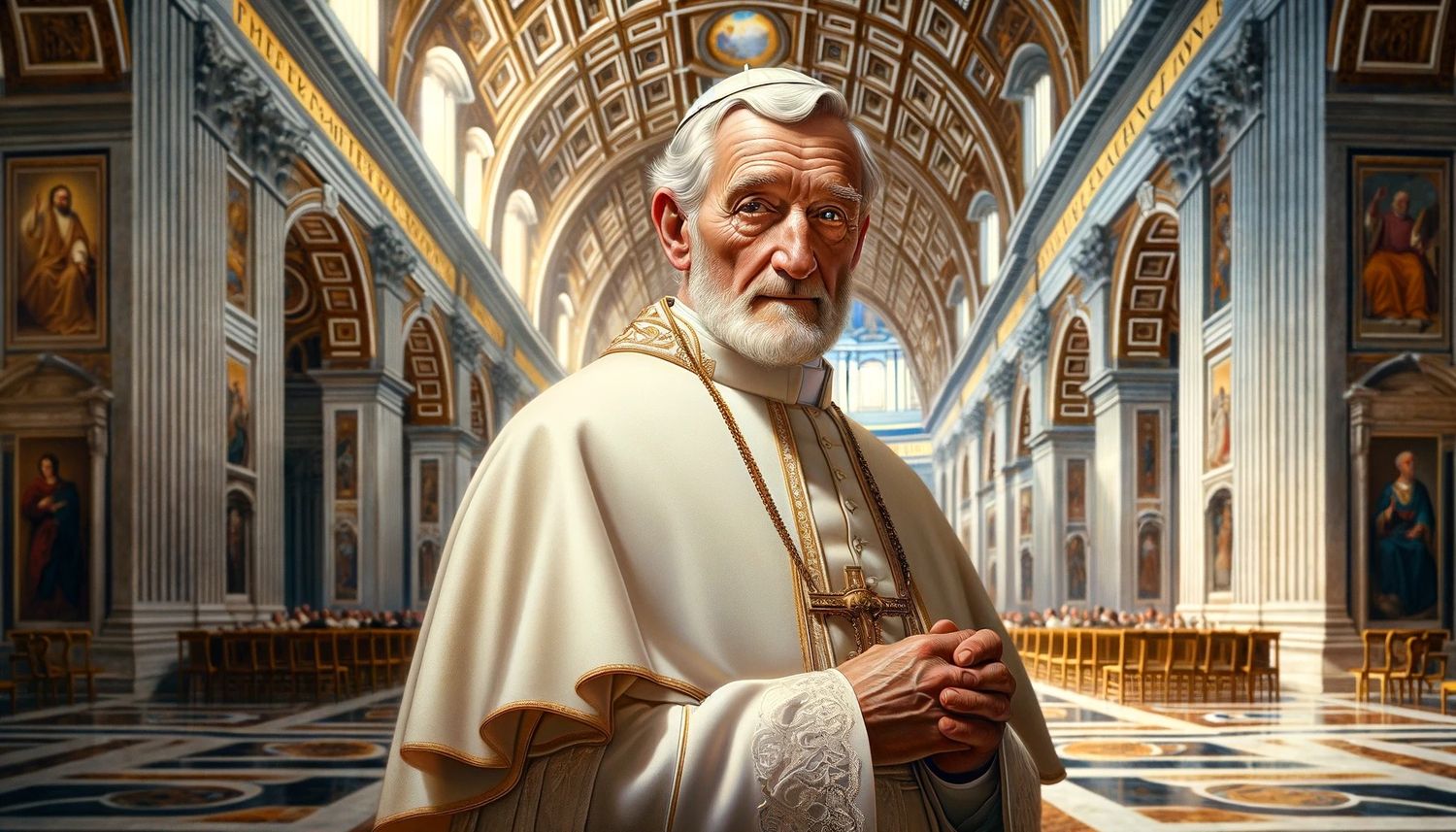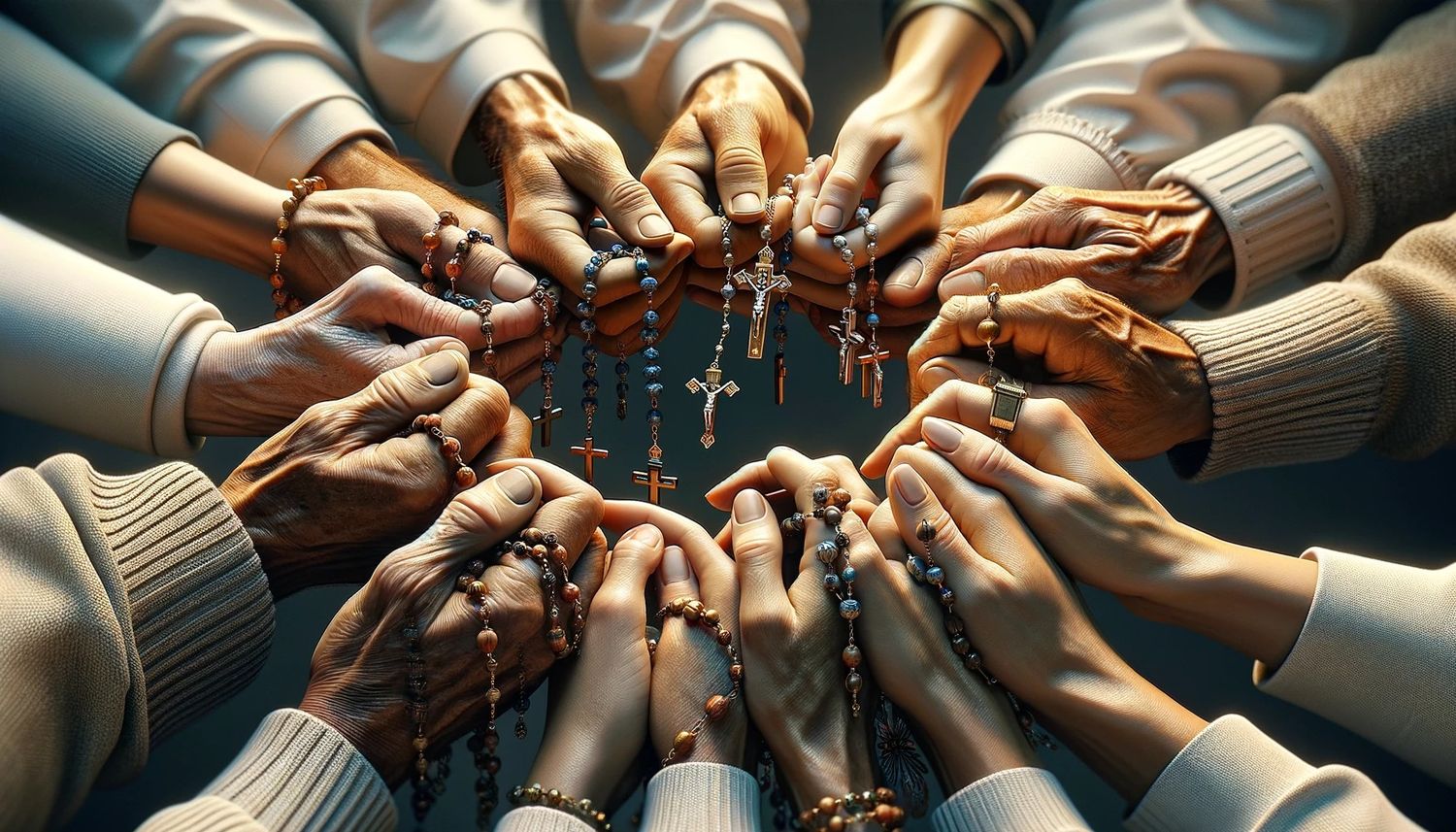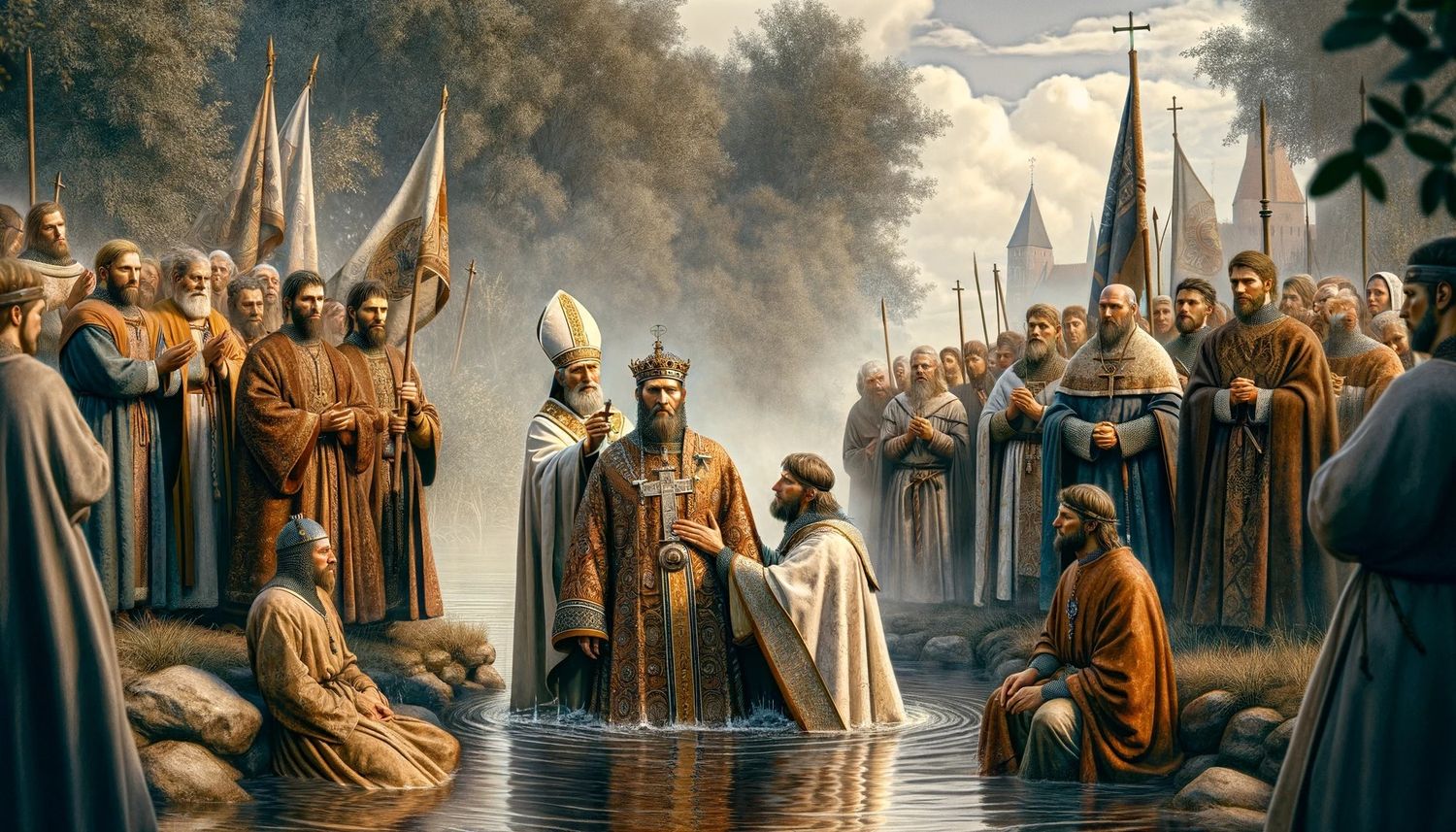Home>Theology and Spirituality>Who Tried To Reestablish Catholicism In England


Theology and Spirituality
Who Tried To Reestablish Catholicism In England
Published: February 17, 2024
Ericka Andersen, an editor at Christian.net, expertly merges digital strategy with content creation, focusing on faith and societal issues. Her communication skills enhance the platform's engaging narratives, fostering meaningful dialogue on belief's impact on society.
Discover the history of Catholicism in England and the attempts to reestablish it. Explore the theological and spiritual implications of this pivotal period in English history.
(Many of the links in this article redirect to a specific reviewed product. Your purchase of these products through affiliate links helps to generate commission for Christian.net, at no extra cost. Learn more)
Table of Contents
Introduction
The history of England is marked by significant religious upheavals, and one of the most notable periods in this regard is the attempt to reestablish Catholicism in the country. This endeavor, which took place during the reign of Mary I, was a pivotal moment that shaped the religious landscape of England for centuries to come.
During the 16th century, England experienced a series of religious transformations, with the pendulum of power swinging between Catholicism and Protestantism. The reign of Mary I, also known as "Bloody Mary," stands out as a period characterized by fervent efforts to restore Catholicism as the dominant faith in England. Mary I, a devout Catholic, ascended to the throne in 1553, following the tumultuous reign of her half-brother, Edward VI, a staunch Protestant.
The religious fervor that accompanied Mary I's ascension to the throne set the stage for a dramatic reversal of the religious reforms implemented during the reign of her father, Henry VIII, and her half-brother, Edward VI. The attempt to reestablish Catholicism in England was not merely a religious initiative; it was a profound political and cultural undertaking that sought to redefine the identity of the nation.
The fervent zeal with which Mary I pursued the reestablishment of Catholicism reverberated throughout the realm, sparking intense debates and resistance from those who had embraced Protestantism. The clash of religious ideologies and the subsequent actions taken to enforce the reestablishment efforts left an indelible mark on the collective consciousness of the English people.
The attempt to reestablish Catholicism in England was not a mere footnote in history; rather, it was a defining chapter that shaped the trajectory of religious freedom and tolerance in the country. The repercussions of this tumultuous period continue to resonate in the annals of English history, serving as a poignant reminder of the enduring struggle for religious autonomy and the complexities of faith in society.
As we delve into the intricacies of this pivotal moment in English history, it is essential to unravel the motivations, key figures, and enduring legacy of the attempted reestablishment of Catholicism in England. By examining these facets, we can gain a deeper understanding of the profound impact of religious dynamics on the socio-political fabric of a nation.
Read more: Who Restored England To Roman Catholicism?
The Reign of Mary I
The reign of Mary I, which spanned from 1553 to 1558, marked a tumultuous period in English history characterized by fervent religious and political upheaval. Mary I, the daughter of Henry VIII and Catherine of Aragon, ascended to the throne with a fervent commitment to reinstating Catholicism as the predominant faith in England. Her devout Catholic beliefs and unwavering determination to reverse the religious reforms initiated by her father and half-brother set the stage for a dramatic and contentious era.
Mary I's ascension to the throne followed the brief and tumultuous reign of her half-brother, Edward VI, a staunch Protestant who had implemented sweeping religious reforms favoring Protestantism. The abrupt shift in religious policies from Protestantism back to Catholicism under Mary I sent shockwaves throughout the realm, igniting fervent debates and resistance from those who had embraced the Protestant faith.
During her reign, Mary I sought to restore the authority of the Catholic Church in England, viewing it as a crucial element in upholding the traditional religious and social order. Her efforts to reestablish Catholicism were not confined to mere religious doctrine; they were deeply intertwined with political and cultural implications, as the religious identity of the nation was at stake.
Mary I's fervor in reinstating Catholicism earned her the epithet "Bloody Mary" due to the persecution of Protestants that ensued during her reign. The execution of prominent Protestant leaders and the enforcement of religious conformity through punitive measures cast a dark shadow over her legacy, leaving a profound impact on the religious landscape of England.
The reign of Mary I was a time of intense religious fervor and ideological conflict, as the pendulum of power swung between Catholicism and Protestantism. The fervent zeal with which Mary I pursued the reestablishment of Catholicism left an indelible mark on the collective consciousness of the English people, shaping the religious dynamics and societal fabric of the nation for generations to come.
As we delve deeper into the attempt to reestablish Catholicism in England, it is essential to comprehend the pivotal role played by Mary I in shaping this transformative period of religious and political upheaval. Her reign serves as a poignant reminder of the enduring struggle for religious autonomy and the complexities of faith in society, leaving an indelible imprint on the annals of English history.
The Attempted Reestablishment of Catholicism
The attempted reestablishment of Catholicism in England during the reign of Mary I was a pivotal endeavor that sought to reverse the religious reforms implemented during the preceding Protestant era. Mary I, driven by her devout Catholic faith and unwavering commitment to restoring the authority of the Catholic Church, embarked on a fervent campaign to reinstate Catholicism as the dominant faith in the country.
Central to the reestablishment efforts was the restoration of papal authority, which had been abolished during the reign of Henry VIII. Mary I sought to reconcile England with the Catholic Church and reinstate the Pope's supremacy, thereby realigning the nation with the traditional religious and social order that had prevailed for centuries. This endeavor was not merely a religious initiative; it was a profound political and cultural undertaking that aimed to redefine the nation's identity and restore its allegiance to the Catholic faith.
The reestablishment of Catholicism was accompanied by a series of legislative measures aimed at dismantling Protestant influence and reinstating Catholic practices. Acts of Parliament were enacted to repeal the religious laws introduced during the Protestant reign, thereby reinstating Catholic doctrines and rituals. The revival of traditional Catholic ceremonies, such as the Latin Mass, and the reinstatement of monastic institutions underscored the comprehensive nature of the reestablishment efforts.
Furthermore, the clergy played a pivotal role in propagating the tenets of Catholicism and enforcing religious conformity. The appointment of devout Catholic bishops and clergy members who were aligned with the reestablishment agenda facilitated the dissemination of Catholic teachings and the suppression of Protestant dissent. The clergy's unwavering commitment to upholding Catholic doctrine and rituals contributed to the pervasive influence of the reestablishment efforts across the ecclesiastical landscape.
The attempted reestablishment of Catholicism was not without resistance, as fervent opposition arose from those who had embraced Protestantism. The enforcement of religious conformity through punitive measures, including the persecution and execution of prominent Protestant leaders, sparked widespread discontent and intensified the religious divide within the nation. The fervent zeal with which the reestablishment efforts were pursued engendered deep-seated ideological conflict and societal upheaval, leaving an indelible mark on the religious dynamics of England.
As the attempted reestablishment of Catholicism unfolded, it became increasingly evident that the religious and political ramifications of this endeavor were profound and far-reaching. The clash of religious ideologies and the subsequent actions taken to enforce the reestablishment efforts left an enduring legacy that continues to resonate in the annals of English history, serving as a poignant reminder of the enduring struggle for religious autonomy and the complexities of faith in society.
Key Figures in the Reestablishment Efforts
The reestablishment of Catholicism in England during the reign of Mary I was propelled by the unwavering dedication and influence of key figures who played pivotal roles in advancing the reversion to Catholic doctrine and practices. These individuals, driven by their devout Catholic faith and allegiance to the reestablishment agenda, wielded significant authority and influence, shaping the trajectory of religious and political dynamics during this transformative period.
Reginald Pole
Reginald Pole, a prominent cardinal and papal legate, emerged as a central figure in the reestablishment efforts, wielding considerable influence in realigning England with the Catholic Church. As a fervent advocate for Catholic unity and the restoration of papal authority, Pole played a crucial role in reconciling England with the Catholic Church and reinstating the Pope's supremacy. His unwavering commitment to the reestablishment agenda and his influential position within the ecclesiastical hierarchy positioned him as a key architect of the endeavor to reinstate Catholicism in England.
Read more: Who Brought Catholicism Back To England
Stephen Gardiner
Stephen Gardiner, the Bishop of Winchester and Lord Chancellor of England, was another influential figure who fervently supported the reestablishment of Catholicism. Gardiner, known for his staunch opposition to Protestant reforms, played a pivotal role in advocating for the revival of traditional Catholic practices and doctrines. His influential position within the political and ecclesiastical spheres afforded him the opportunity to actively promote the reestablishment agenda, contributing to the comprehensive efforts to dismantle Protestant influence and reinstate Catholic authority.
Mary I
Mary I herself, as the reigning monarch and a devout Catholic, was a central figure in spearheading the reestablishment efforts. Her unwavering commitment to reinstating Catholicism as the predominant faith in England and her fervent determination to reverse the religious reforms implemented during the preceding Protestant era underscored her pivotal role in shaping the religious and political landscape of the nation. Mary I's fervor in enforcing religious conformity and her resolute pursuit of the reestablishment agenda left an indelible mark on the collective consciousness of the English people, solidifying her position as a key figure in the transformative endeavor to reestablish Catholicism.
The influence and dedication of these key figures in the reestablishment efforts were instrumental in shaping the religious and political dynamics of England during this tumultuous period. Their unwavering commitment to advancing the reversion to Catholic doctrine and practices left an enduring legacy that continues to resonate in the annals of English history, serving as a poignant reminder of the enduring struggle for religious autonomy and the complexities of faith in society.
Opposition to the Reestablishment
The fervent endeavor to reestablish Catholicism in England during the reign of Mary I was met with vehement opposition from segments of the population who had embraced Protestantism. The attempt to reverse the religious reforms implemented during the preceding Protestant era sparked widespread discontent and resistance, igniting a fervent ideological and societal divide within the nation.
Prominent Protestant leaders, including influential clergy members and scholars, emerged as vocal opponents of the reestablishment efforts. Their steadfast commitment to Protestant doctrine and their unwavering opposition to the revival of Catholic practices and rituals galvanized a formidable resistance movement. These dissenting voices vehemently denounced the reversion to Catholicism, viewing it as a regressive step that threatened the religious freedoms and doctrinal reforms ushered in during the Protestant era.
The enforcement of religious conformity through punitive measures, including the persecution and execution of prominent Protestant leaders, further fueled the flames of opposition. The punitive actions taken to suppress Protestant dissent and enforce Catholic conformity engendered widespread outrage and intensified the ideological conflict within the nation. The persecution of dissenting voices served to crystallize the stark divide between Catholicism and Protestantism, deepening the rift that permeated the religious and societal fabric of England.
The opposition to the reestablishment of Catholicism was not confined to theological and doctrinal disagreements; it encompassed broader socio-political implications. The fervent resistance to the reversion to Catholicism reflected a profound commitment to upholding the principles of religious autonomy and doctrinal freedom. The clash of religious ideologies and the ensuing resistance underscored the deeply entrenched convictions and fervent dedication of those who vehemently opposed the reestablishment efforts.
The enduring legacy of the opposition to the reestablishment of Catholicism serves as a poignant reminder of the enduring struggle for religious autonomy and the complexities of faith in society. The fervent resistance to the reversion to Catholic doctrine and practices left an indelible mark on the religious dynamics and societal fabric of England, shaping the trajectory of religious freedom and tolerance for generations to come.
Legacy of the Reestablishment Efforts
The attempt to reestablish Catholicism in England during the reign of Mary I left an enduring legacy that reverberated throughout the religious, political, and societal fabric of the nation. The profound impact of the reestablishment efforts transcended the immediate historical context, shaping the trajectory of religious dynamics and societal attitudes toward faith for centuries to come.
The legacy of the reestablishment efforts is indelibly intertwined with the enduring struggle for religious autonomy and the complexities of faith in society. The fervent zeal with which the reversion to Catholic doctrine and practices was pursued engendered deep-seated ideological conflict and societal upheaval, leaving an indelible mark on the collective consciousness of the English people. The clash of religious ideologies and the ensuing resistance underscored the deeply entrenched convictions and fervent dedication of those who vehemently opposed the reestablishment efforts.
Furthermore, the enduring legacy of the reestablishment efforts is reflected in the enduring impact on the religious landscape of England. The attempt to reinstate Catholicism as the predominant faith in the country left a profound imprint on the ecclesiastical hierarchy and religious institutions. The revival of traditional Catholic practices and rituals, as well as the reinstatement of papal authority, reshaped the religious identity of the nation, leaving a lasting impact on the ecclesiastical landscape.
Moreover, the legacy of the reestablishment efforts is intricately linked to the enduring struggle for religious freedom and tolerance. The fervent opposition to the reversion to Catholicism underscored the profound commitment to upholding the principles of religious autonomy and doctrinal freedom. The clash of religious ideologies and the subsequent resistance served as a catalyst for the advancement of religious tolerance and the recognition of diverse faith traditions within the societal framework.
The enduring legacy of the reestablishment efforts serves as a poignant reminder of the complexities of faith in society and the enduring struggle for religious autonomy. The profound impact of this transformative period continues to resonate in the annals of English history, shaping the trajectory of religious freedom, tolerance, and societal attitudes toward faith for generations to come.

